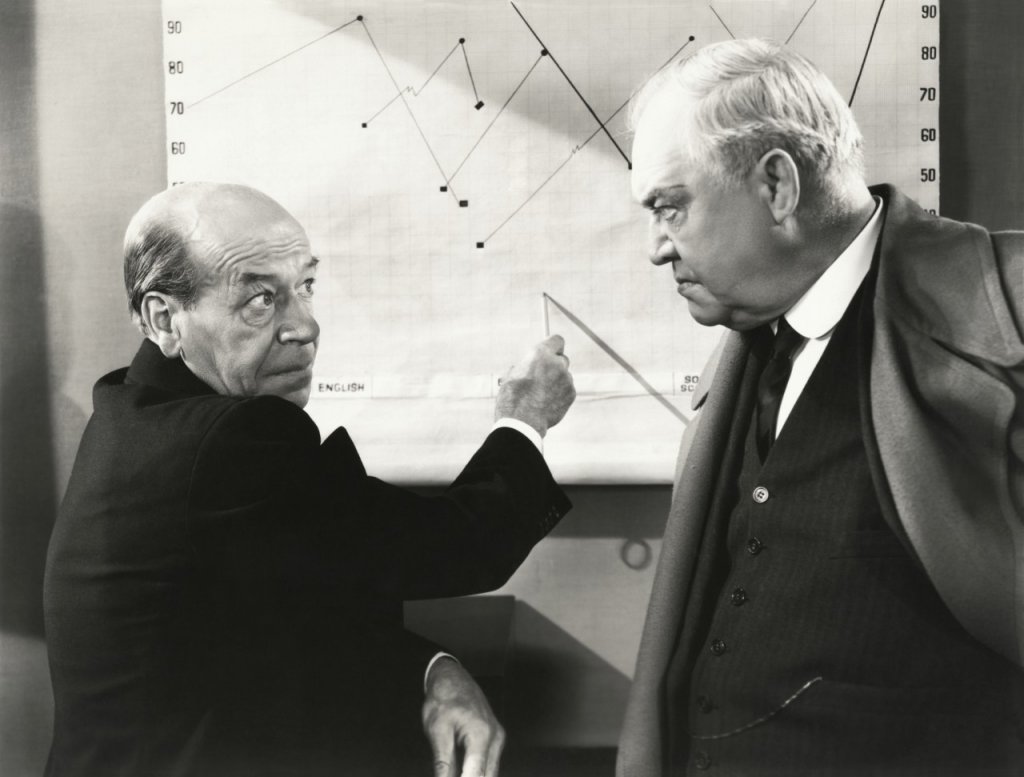
Old school sales techniques that still work today
The world is changing. Technology plays an increasingly prominent role in all aspects of our working and personal lives. Digital innovations are constantly changing the way in which consumers behave and, thus, the way in which businesses tailor their operations to best suit their needs.
Traditional business models are slowly but surely giving way to the rise of e-commerce. And while the high street is far from breathing its last, businesses of all shapes and sizes are learning to integrate their digital presence with their traditional sales ventures in a “bricks and clicks” approach to commerce.
Indeed, when you’re going into business for yourself it can be bewildering even to take stock of all the technology available to you. In an era of commerce platforms, CRMs, and randomly generated coupon codes you could be forgiven for thinking that honest-to-goodness sales talent has become a quaint anachronism. A nicety from a bygone age.
But while new innovations can and should support sales ventures of all kinds, all the digital savvy in the world is no substitute for tried and true sales techniques. The same sales techniques that have been used to close deals for generations of talented sales professionals are as viable today as they were when they were first passed down from one salesman to the next.
So, let’s take a look at some of these old school sales techniques that still work perfectly well today. You’ll see that in the technologically led 2020s there’s still no school like the old school!
Foot in the door
Okay, so the phrasing may be a little unfortunate here. It conjures up images of over-ambitious door-to-door salesmen jamming their size ten loafers into door frames and foisting their wares on intimidated housewives. Don’t worry, the foot in the door technique isn’t as aggressive a sales tactic as its name would suggest. In fact, you may well find that as a sales professional you use this technique all the time. Except the cool kids call it “upselling” now.
Closing a deal is all about negotiation. And the foot in the door is the modest request you make to the prospect that then leads to the bigger request. The foot in the door technique can help to build trust and rapport with the prospect much more readily than if you were to simply approach them with your sales pitch cold.

The foot in the door might be a free sample, a consumer survey, or a smaller purchase to which you apply optional extras or higher value alternatives. In digital terms, this might be something as simple as convincing prospects to follow you on social media or subscribe to your email shoots. When using the foot in the door technique, it’s important to remind the prospect that they can back out at any time. In an era where consumers are accustomed to being in the driving seat it’s absolutely imperative that they feel in control.
The foot in the door technique leverages the fact that internal thought is a much more effective driver of consumer behavior than external pressure. Because this technique allows prospects to make their own decisions once they have agreed to the modest favour that gets you through the door, it can be extremely effective.
Give me a week
We live in an intensely time-driven culture. Many of us are up against deadlines and juggling final demands until payday. It seems as though we are living in a near-constant race against time. Perhaps that’s why consumers tend to respond so positively to time-driven requests. If we are told to expect results within a certain timeframe we are better predisposed to whatever mechanism brings us that result. Some examples of this in context might include: “Give me a week and I’ll double your conversion rates” or “Give me a week and I can help you lose 2 lbs”.

This is often used for consultants and other services like managed IT, digital marketing or SaaS. Nonetheless, it can be used for products, too. Just make sure that your product can back up whatever claim you’re making or you could be left with some egg on your face. What’s more, the qualifying time period doesn’t have to be a week. It can be two weeks, a month, six months or even a year. Just make sure that your product or service can realistically meet your client’s expectations within that time frame.
The ability to use the “give me a week” technique demonstrates to prospects that you have faith in the products and services you offer and frames the pitch in a way that focuses on benefits within a specific timeframe. If your benefits are meaningful to the prospect the cost will be relatively negligible if they believe that you can deliver the results that matter to them!
Now or never
If there’s one thing that all sales professionals find frustrating it’s those prospects who just won’t get off the fence. It’s not that they’re not interested. It’s not that they’ll never convert. But they’re taking their sweet time about it. And why wouldn’t they? Today’s consumers have been conditioned against accepting the first offer that comes their way even if it is the best they’re ever going to get.
In situations like these, sales professionals need the “now or never” approach. They need to convince the consumer that they’re not going to find this good a deal anywhere else and if they don’t commit here and now the deal of a lifetime is going to pass them by.

Nowadays they have a fancy name for it (because, of course, they do). You might find the cool kids in marketing circles calling it “scarcity marketing.” But the underlying theory is as old as commerce itself. Customers are naturally going to drag their feet if they have all the time in the world to make their minds up. Especially in a market where customers know that they can afford to be fickle.
After all, in the digital age, we’re all bargain hunters. As consumers, it’s ingrained within our psyche that we can always find a better deal if we do a little rummaging. With this in mind, prospects will always sit on the shelf as long as they think they have all the time in the world to find a better deal elsewhere.
Stock is running out
Staying with the idea of scarcity, prospects will always be more leisurely in their buying habits when they believe that the commodity they’re interested in is abundant. Unfortunately, this can lull them into a false sense of security and leave them to become complacent. If they believe that they have all the time in the world, by the time they do consider themselves ready to buy, they may well find that stock has run out.
The “stock is running out” technique builds value in your product and reminds prospects that they are not the only ones who can benefit from it. It’s a great way to motivate complacent prospects and get them off the fence.

However, while this technique can be effective, it needs to be carefully and artfully deployed. After all, we’re used to seeing this technique used indiscriminately every day. Every time we drive past a furniture store that seems to have “going out of business” sales three or four times a year, every time we’re told to buy now “while stocks last” the efficacy of this technique is potentially diminished.
Some prudent ways to apply this might be: “We only have one or two left, but I can put one aside for you until the end of the day” or “I only have a few appointments left in my diary, but if you tell me when you’re free I can move some things around for you”.
Consumers are motivated by scarcity. Just be wary of using this technique when stock is actually abundant.
Conclusion
The world of sales, no matter what your product or service is changing. But the psychological principles that motivate consumer behavior are as constant as they ever were. With this in mind, whatever technological bells and whistles you might employ to grow your reach or make your operations easier, there’s still plenty of room to leverage the good-old-fashioned tried and true sales techniques of yore.

Of course, while you can apply any of the above old school sales techniques to great success, the technique is only as good as the business and the sales professional deploying it. Make sure you use techniques that are relevant to your business, product, service and clientele. Certain techniques lend themselves more readily to certain products and business models.
Nonetheless, the beauty of all of these techniques is that the principles behind them are so sound that they can be shaped and adapted to suit your business model and the psychology that motivates your target audience. Leverage these techniques and you can enjoy sustainable success for years to come. After all, a classic never dies!